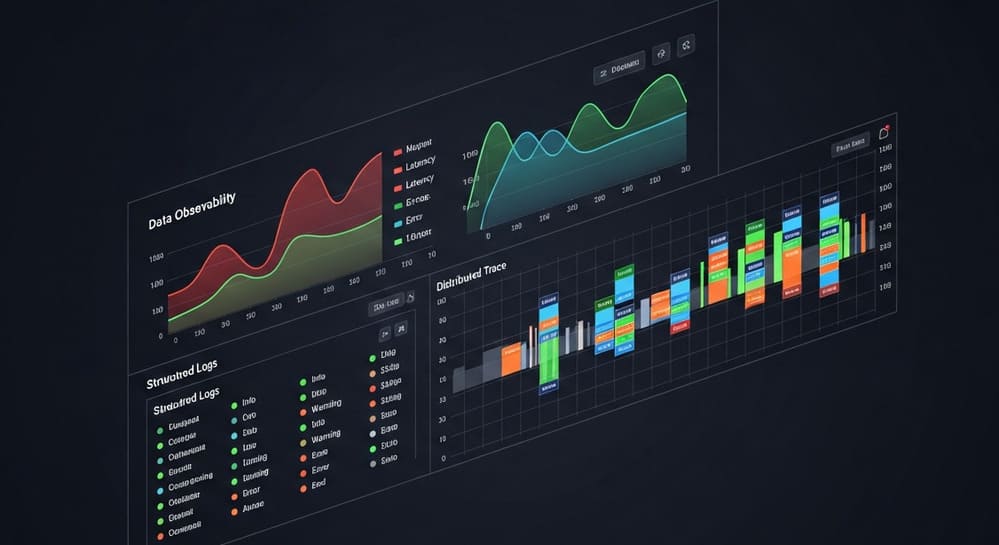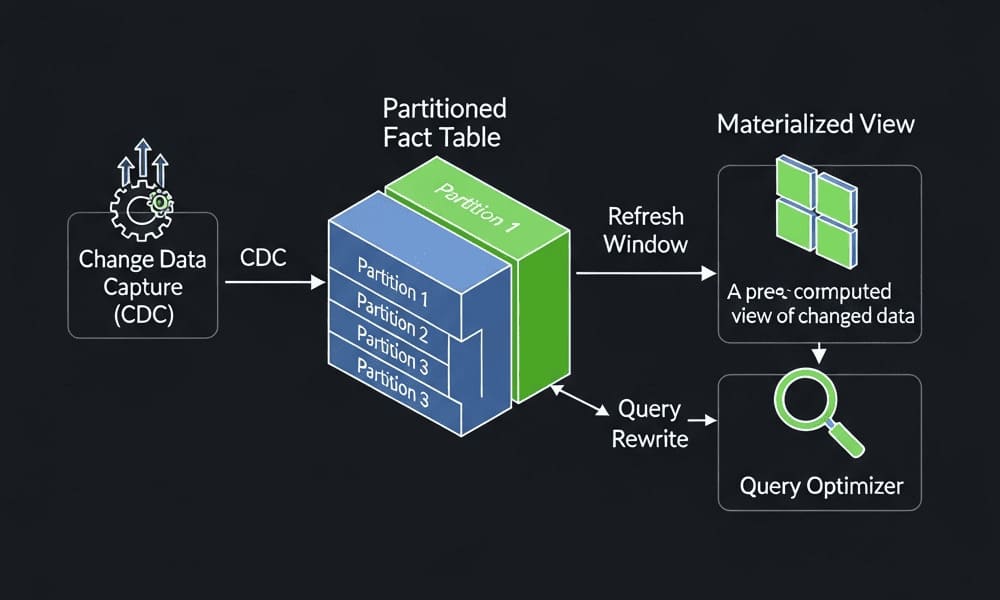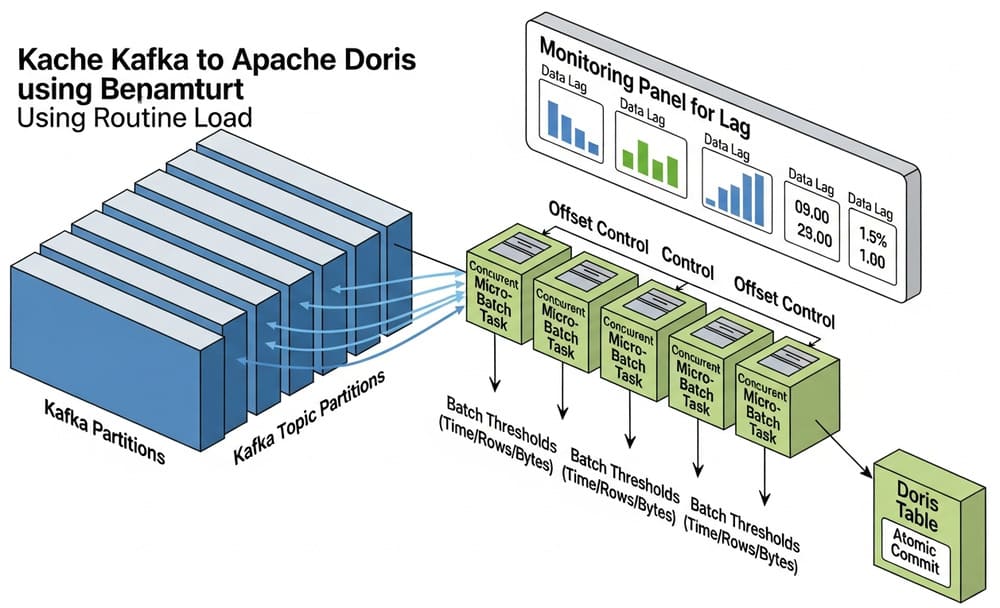Apache Hive in 2026: Still the Workhorse of Batch Analytics on the Data Lake
Hook: Your lake is full of Parquet/ORC files, analysts keep asking for SQL, and leadership wants governance without rebuilding everything on a warehouse. You don’t need to reinvent the stack—you need Hive done right.
Why Hive still matters
Hive turned HDFS object blobs into SQL tables long before “data lakehouse” was a thing. Today it remains the backbone for:
- Batch ETL/ELT at scale on HDFS/S3-compatible storage
- Schema & governance via the Hive Metastore (the catalog behind many engines)
- Open table formats with ACID support (ORC + transactions) for slowly changing data
- Interoperability: Spark, Presto/Trino, Flink, and engines like Athena/BigQuery (external) read Hive metastore-compatible tables
If your team needs cheap, scalable SQL over files with predictable throughput and strong governance, Hive is still a pragmatic choice.
Architecture at a glance
- Metastore (HMS): Central catalog storing databases, tables, columns, partitions, and stats. Foundation for multiple engines.
- HiveServer2 (HS2): JDBC/ODBC endpoint for queries; supports authentication/authorization.
- Compiler & Optimizer: SQL → logical plan → physical plan; includes vectorization and CBO (Calcite-based).
- Execution Engines: Historically MapReduce; modern deployments use Tez or Spark for DAG execution.
- Storage & SerDes: Reads/writes files in ORC (preferred), Parquet, AVRO; SerDes handle parsing/serialization.
- LLAP (Low Latency Analytical Processing): Long-lived daemons with data caching and JIT to accelerate interactive queries.
Core concepts you must get right
Partitions (coarse pruning)
Split large tables by high-cardinality-but-not-crazy columns (e.g., event_date, sometimes country). Reduces file listing and scan volumes.
Bucketing (shuffle control)
Hash-distribute rows into a fixed number of buckets on a column, enabling efficient joins and sampling. Works best with ORC and consistent CLUSTERED BY usage.
ORC + Statistics
ORC with predicate pushdown, compression, bloom filters, column-level mins/maxes, and stripe stats can make or break performance. Keep ANALYZE TABLE … COMPUTE STATISTICS up-to-date.
ACID transactions
Hive ACID adds INSERT/UPDATE/DELETE and MERGE semantics using delta files and compaction. Perfect for incremental corrections and late-arriving facts—not for high-QPS OLTP.
Real example: A production-ready ACID table (ORC, partitioned, bucketed)
-- Enable dynamic partitions and CBO
SET hive.exec.dynamic.partition=true;
SET hive.exec.dynamic.partition.mode=nonstrict;
SET hive.cbo.enable=true;
SET hive.vectorized.execution.enabled=true;
SET hive.txn.manager=org.apache.hadoop.hive.ql.lockmgr.DbTxnManager;
SET hive.compactor.initiator.on=true;
SET hive.compactor.worker.threads=2;
-- A fact table with ACID, ORC, and bucketing
CREATE DATABASE IF NOT EXISTS sales;
CREATE TABLE IF NOT EXISTS sales.fact_orders (
order_id BIGINT,
customer_id BIGINT,
order_ts TIMESTAMP,
country STRING,
channel STRING,
item_id BIGINT,
qty INT,
price DECIMAL(12,2)
)
PARTITIONED BY (order_date DATE)
CLUSTERED BY (customer_id) INTO 64 BUCKETS
STORED AS ORC
TBLPROPERTIES (
'transactional'='true',
'orc.compress'='ZLIB',
'orc.bloom.filter.columns'='customer_id,item_id'
);
-- Load with dynamic partitions
INSERT INTO TABLE sales.fact_orders PARTITION (order_date)
SELECT
order_id, customer_id, order_ts, country, channel, item_id, qty, price,
CAST(order_ts AS DATE) AS order_date
FROM staging.orders_raw;
-- Keep stats fresh for CBO
ANALYZE TABLE sales.fact_orders PARTITION (order_date) COMPUTE STATISTICS;
ANALYZE TABLE sales.fact_orders PARTITION (order_date) COMPUTE STATISTICS FOR COLUMNS customer_id, item_id, country;
Querying with window functions and pruning:
-- Revenue per customer last 30 days (partition prune by date predicate)
SELECT customer_id,
SUM(qty * price) AS revenue_30d,
RANK() OVER (ORDER BY SUM(qty * price) DESC) AS rnk
FROM sales.fact_orders
WHERE order_date >= DATE_SUB(CURRENT_DATE, 30)
GROUP BY customer_id
ORDER BY revenue_30d DESC
LIMIT 100;
Compaction for ACID tables (admin task):
-- Trigger a major compaction to merge many small delta files
ALTER TABLE sales.fact_orders COMPACT 'MAJOR';
Performance checklist (Tez/LLAP-first)
- Prefer ORC with ZLIB or Snappy; enable vectorization.
- Partition by time; bucket by join key where joins are frequent.
- Compute table & column stats regularly; automate after loads.
- Avoid tiny files: use larger ORC stripes (e.g., 64–256 MB).
- Skew handling: leverage
SKEWED BY(rare) or rewrite queries with salting; considermapjoinfor small tables. - Tez + LLAP for interactive speed; ensure YARN containers sized for vectorized scans.
- Push transforms to ingest (Spark/Flink) so Hive does less work at query time.
Common pitfalls (and blunt fixes)
- Too many partitions (hourly + country + device): metastore thrash.
→ Collapse to daily or daily + country, and keep total partitions per table under control (rule of thumb: thousands, not millions). - Small-file apocalypse from streaming micro-batches.
→ Compact upstream or schedule MAJOR COMPACTION. Batch to target 128–512 MB files. - Old MapReduce engine still in use.
→ Migrate to Tez (or Spark) immediately. - Stale/no statistics → terrible plans.
→ AutomateANALYZE TABLE …in your pipeline. - Relying on Hive indexes.
→ Don’t. They were deprecated/removed; use ORC bloom filters + partitioning/bucketing. - Schema drift without governance.
→ Enforce contracts at ingest; use schema registry/DDL reviews; document SerDes.
When to use Hive vs Spark SQL vs Trino/Presto
| Criterion | Hive (Tez/LLAP) | Spark SQL | Trino/Presto |
|---|---|---|---|
| Primary strength | Batch ETL, ACID over ORC, governance | Complex transforms, ML/ETL pipelines | Low-latency federated SQL |
| Latency | Seconds–minutes (LLAP can be faster) | Seconds–minutes | Sub-second–seconds |
| Cost model / CBO | Mature with stats (Calcite) | Good; benefits from stats | Good; connector-aware |
| Transactions | ACID for ORC (delta+compactions) | Delta/Iceberg/Hudi via Spark | Iceberg/Hudi connectors (read/write) |
| Operational complexity | Moderate (HMS, HS2, YARN/Tez/LLAP) | Higher (clusters, libraries, tuning) | Moderate (coordinator+workers) |
| Best fit | Curated lake tables, governed ETL | Heavy transforms, AI/ML + batch | BI-style interactive queries |
Reality: Many teams run Hive for catalog/ACID, Spark for heavy transforms, and Trino for BI.
Data modeling tips for Hive tables
- Star-ish schemas still work: fact tables partitioned by date; dimensions as small ORC tables.
- Denormalize judiciously to reduce shuffles; pre-aggregate hot metrics.
- Use natural clustering keys (e.g.,
customer_id) for bucketing to accelerate joins. - Adopt table properties: bloom filters, compression, and
transactional=truewhen you need updates/deletes. - Name consistently:
db.fact_orders_yvsdb.dim_customerwith clear partition columns.
Governance & security
- Use Ranger/Sentry (or your cloud provider’s equivalent) for row/column-level security, masking, and auditing.
- Tie HS2 to Kerberos/OIDC; integrate LDAP/AD groups for role-based access.
- Back up the Metastore DB and test disaster recovery regularly.
Real-time & streaming notes
- Hive is not a streaming engine. For near-real-time:
- Ingest via Kafka/Flink/Spark Structured Streaming.
- Land compacted ORC files; expose through Hive MS.
- For <2s latency analytics, query with Trino/Presto or a dedicated TSDB.
Tuning crib sheet
- Files & stripes: Target ~128–256 MB ORC files; 64–128 MB stripes.
- Parallelism: Tune Tez container size (4–8 GB) and concurrency; avoid over-splitting.
- Joins: Enable map-side join for small dims:
SET hive.auto.convert.join=true; - Spilling: Ensure I/O throughput; prefer SSDs for shuffle if on-prem.
- LLAP cache: Allocate enough memory to hold hot partitions; monitor hit rates.
Conclusion & takeaways
Hive isn’t flashy, but it’s reliable, cheap, and interoperable. If you model with partitions/buckets, store data in ORC with fresh stats, and run on Tez/LLAP, you’ll get predictable, scalable batch analytics with governance your auditors will sign off on. Pair it with Spark for transformation and Trino for BI, and your data lake will feel like a warehouse—without the lock-in.
Key takeaways:
- Use ORC + stats + Tez/LLAP.
- Partition by time; bucket by join keys.
- Kill small files; schedule compactions.
- Govern via Metastore + Ranger, and back it up.
- Let Hive do batch; use the right engine for interactive or ML.
Internal link ideas (for your blog/wiki)
- Partitioning strategies in data lakes (daily vs hourly, country, device)
- ORC vs Parquet for batch analytics
- Enforcing data contracts at ingest (schema registry + DDL reviews)
- Spark vs Hive execution engines: when to choose which
- Trino/Presto for BI on the data lake
Image prompt
“A clean, modern data architecture diagram illustrating an Apache Hive stack: Hive Metastore, HiveServer2, Tez execution on YARN, ORC tables on HDFS/S3, with partitions and buckets. Minimalistic, high-contrast, 3D isometric style.”
Tags
#ApacheHive #HiveMetastore #DataEngineering #BigData #ORC #ETL #Tez #LLAP
Apache Hive, Hive Metastore, Data Engineering, Big Data, ORC, ETL, Tez, LLAP, SQL on Hadoop




